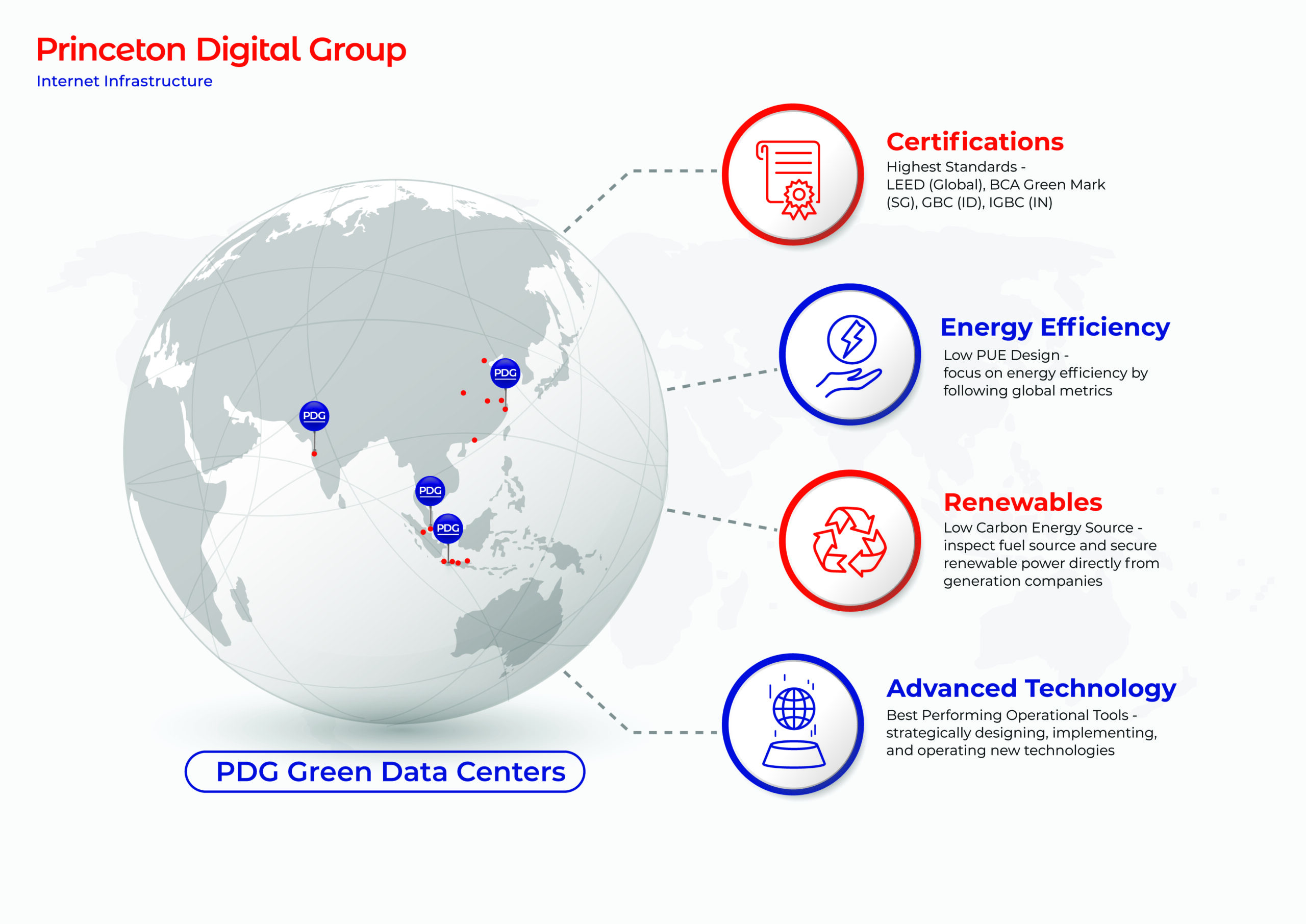Investing in sustainability as a key strategy for higher returns
The business case for data centers, the infrastructural backbone of the new digital universe, is compelling. So is the environmental agenda. Putting the two together for a sustainable future is not just a trend on the rise among facility operators, but an ambition that makes real economic sense.
Internally, sustainable operations translate to energy cost efficiency. By some market estimates, powering a data center accounts for between 25% to 60% of operating expenses over the life of a facility [1]. Externally, operators are motivated by their customers’ and investors’ expectations for green practices, as well as incentivized by government tax breaks and subsidies.
For investors in many Asian markets, incorporating the environmental factor in the investment process is in its early stages. But this environmental component is predicted to outweigh Social and Governance (ESG) issues, according to the ESG Integration survey in Asia Pacific: Markets, Practices, and Data by the CFA Institute and the United Nations-supported Principles for Responsible Investment (PRI) in 2019 [2]. It estimated that the number of investors expecting ESG issues to affect share prices and bond yields will increase in 2022 when compared to 2017, with environmental factor becoming the most influential. The number of respondents expecting environmental issues to “often” or “always” affect share price jumped from 24% to 59%, and corporate bond yields surged from 15% to 48%.
That trend will only grow as the world processes and consumes more data and information, propelled by the growing application of the Internet of Things (IoT), artificial intelligence, and 5G.
Unbeknownst to most users, every link, visual or digital file clicked on, enjoyed, and then shared requires a complex transaction involving miles of internet conduits and numerous data centers before arriving from one point to another. Along with it comes a carbon footprint trail because all data created requires storage and processing, and, in turn, power to do the task.
IDC projects that 59 zettabytes (ZB), or 59 trillion gigabytes, of data will be created and consumed globally this year, up from the current 44 ZB [3].
The data explosion also rides on the backs of the rapid growth of hyperscalers like Google, Amazon, Facebook, and Alibaba, who are leading the increase in demand for cloud computing and data centers. This has resulted in a sharpened focus on the data center industry to manage the environmental impact.
A study published in Science magazine in February showed that although data center compute instances increased by 550% from 2010 to 2018, aggregate power consumption for computation during the period only rose by 6%. It found that energy use per compute instance – a measure of energy intensity of data centers – reduced by 20% annually since 2010, comparing favorably against other industries like aviation and manufacturing [4].
The world’s data centers’ usage of 1% of the total global electricity consumption was also unchanged during the period, according to the study. Still, improvement aside, data centers remained responsible for more than 200 TWh of power consumption in 2018 [5]. There is certainly no room to be complacent, especially with the scale of expansive growth in computing output.
In addition, the desire for green infrastructure is real and comes at multiple levels, from end user consumers to hyperscalers to investors. As a player in the ecosystem, we see that challenges come with opportunities, which if properly addressed will bring value and actual and intangible equity to the business over the mid and long terms.
Amid such a context, Princeton Digital Group is implementing a comprehensive program aimed to manage and reduce our environmental impact, centering on four key areas:
First, our capital expenditure budget for each of our data centers includes construction and procurement of cooling technology and electrical equipment to minimize carbon footprint. Our environmental policies are extended to our vendors, with whom we thoroughly evaluate all our offerings – Would an air-cooled or a water-cooled chiller be less adversely impactful? What type of uninterruptible power supply (UPS) system would be most energy-efficient? The answers to such questions will underscore how our purchasing power can affect other players in the supply chain to focus on the environment.
Second, our customers need power for their servers and equipment, and we require additional supply to maintain a controlled environment for their infrastructure. While their energy consumption is beyond our direct control, we can significantly ensure the quantum of power required to maintain temperatures and humidity at acceptable levels. This is measured in the industry by the Power Utilization Efficiency (PUE) metric – how much energy the computing equipment uses. PUE improvement starts with the technical and commercial discussions we have with our customers.
Third, there is already a trend among several of our customers, who have advanced equipment capable of operating in relatively higher temperature ranges. This makes a significant impact on PUE (as it takes less power to maintain a higher temperature range). In addition, while the best PUE is often determined at the design stage, it takes best-in-class engineering and operations to run data centers at their design PUE. Ensuring we maintain a team of talented professionals with an industry track record is critical.
Fourth, the use of renewables is another lever to reduce environmental impact. PDG is a pan-Asian company with a presence in China, India, Indonesia, and Singapore, giving us the opportunity to work towards leveraging various country-specific opportunities. China is the world’s leading producer of renewable energy with 728 GW of output. India has also made several strides in the renewable space, with more than 20% of its total utility electricity coming from green sources. Our presence in the two countries allows us to capitalize on their available renewable resources. The same can be said of Indonesia and Singapore, where policymakers are pushing for greater use of renewables.
Our environmental journey has just begun. PDG actively strives to certify all our new data centers to the highest possible standards applicable in the Asia-Pacific region (LEED Globally, BCA Green Mark SG, IGBC in India, GBC in Indonesia). We are implementing consistent processes and operations, and the drive is gaining traction. We believe a sustainable proposition is the way forward and we are excited for the opportunity to contribute to lessening the digital economy’s impact on the environment as we expand our business scope and scale across the region.
About PDG
Princeton Digital Group (PDG) is a Warburg Pincus-backed investor, developer, and operator of internet infrastructure. Our portfolio of data centers powers the expansion of hyperscalers and enterprises in the world’s fastest-growing digital economies. Our agility, speed, and unmatched experience in scaling global internet infrastructure provide our partners and customers immediate access to growth opportunities across Asia. To engage with us, email us at info@test.princetondg.com








